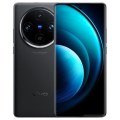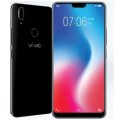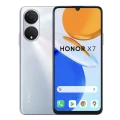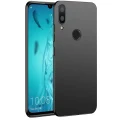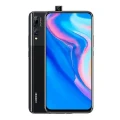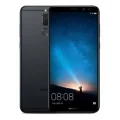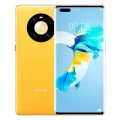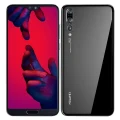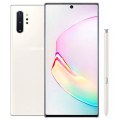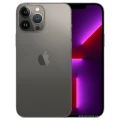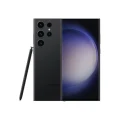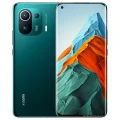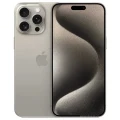Vivo Y30
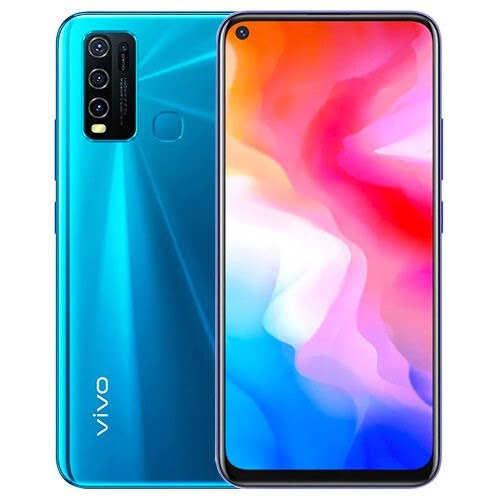


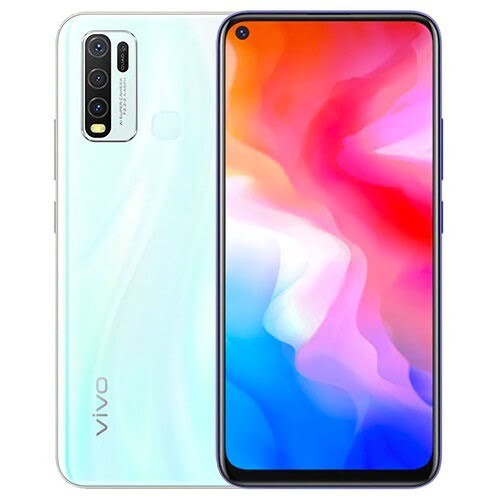
Vivo Y30 Price in Bangladesh
The Vivo Y30 is a mid-range smartphone priced around BDT 16,990 in Bangladesh. It offers a large display, a capable camera system, a long-lasting battery, and a powerful processor. It’s a popular choice among users who prioritize value for money and performance.
Specifications
General
| Model | Vivo Y30 |
| Announced | 2020, May 07 |
| Released | 2020, May 09 |
| Status | Available |
| Official price | 4GB 64GB ৳16,990 |
Design
| Dimensions | 162 x 76.5 x 9.1 mm (6.38 x 3.01 x 0.36 in) |
| Weight | 197 g (6.95 oz) |
| Colors |
Dazzle Blue, Moonstone White |
Network
| Technology | GSM / HSPA / LTE |
| 2G Network |
GSM 850 / 900 / 1800 / 1900 - SIM 1 & SIM 2 |
| 3G Network |
HSDPA 850 / 900 / 2100 |
| 4G Network |
1, 3, 5, 7, 8, 38, 40, 41 |
| GPRS <strong>GPRS</strong> (General Packet Radio Service) is a packet oriented mobile data service on the 2G and 3G cellular communication system's global system for mobile communications (GSM), Generally, GPRS is used for the purpose of wireless data transfer, such as sharing pictures and videos or browsing the Internet via a mobile phone connection. | |
| EDGE <strong>EDGE</strong> (Enhanced Data GSM Environment) is a wireless network technology generally considered the next step in the 2G network offers data transfer rates up to four times faster than ordinary GSM networks, Generally, EDGE is used for the purpose of wireless data transfer, such as sharing pictures and videos or browsing the Internet via a mobile phone connection. | |
| Speed | HSPA 42.2/5.76 Mbps, LTE-A |
Display
| Display Type <strong>Display Technology => </strong> A number of display technologies and types used in mobile phones => TFT (Thin Film Transistor), IPS (In-Place Switching), OLED (Organic Light Emitting Diode), AMOLED (Active-Matrix Organic Light-Emitting Diode), Super AMOLED (an even advanced version of AMOLED), Resistive Touchscreen (Resistive touchscreens contain two layer of conductive material with a very small gap between them which acts as a resistance), Capacitive Touchsceen (Capacitive touchscreen technology consists of a layer of glass coated with a transparent conductor) | IPS LCD capacitive touchscreen, 16M colors |
| Size | 6.47 inches, 102.8 cm2 (~82.9% screen-to-body ratio) |
| Resolution | 720 x 1560 pixels, 19.5:9 ratio (~266 ppi density) |
Camera
Main camera
| Camera Setup | Quad |
| Primary <strong>Camera</strong> is able to capture photographs and usually videos, The most important characteristics of a camera are the resolution (measured in megapixels), lens focus type (fixed or automatic), higher megapixel cameras are known to capture higher quality photos, but not always a good measurement of the photos quality. |
13 MP, f/2.2, (wide), PDAF 8 MP, f/2.2, (ultrawide), 1/4.0&amp;quot;, 1.12µm 2 MP, f/2.4, (macro) 2 MP, f/2.4, (depth) |
| Features |
LED flash, HDR, panorama |
| Video | 1080p@30fps |
Selfie camera
| Camera Setup | Single |
| Primary <strong>Camera</strong> is able to capture photographs and usually videos, The most important characteristics of a camera are the resolution (measured in megapixels), lens focus type (fixed or automatic), higher megapixel cameras are known to capture higher quality photos, but not always a good measurement of the photos quality. |
8 MP, (wide) |
| Video | 1080p@30fps |
Hardware
| Chipset <strong>Chipset</strong> is a group of integrated circuits designed to perform one or a more dedicated functions, often with real time computing constraints, Popular smartphones are equipped with more advanced embedded chipsets that can do many different tasks depending on their programming. | Mediatek MT6765 Helio P35 (12nm) |
| CPU <strong>CPU</strong> (Central Processing Unit) mostly known as processors, CPU processes instructions in order to carry out certain functions that make your device operate properly. Processors are often described as the brain of computers, smartphones and tablets, Smartphones and tablets rely on processors to carry out their every task, Processors are an incredibly important factor in selecting any type of computing device, including your smartphone. | Octa-core (4x2.35 GHz Cortex-A53 & 4x1.8 GHz Cortex-A53) |
| GPU <strong>GPU</strong> (Graphics Processing Unit) is a single-chip processor designed to rapidly manipulate and alter memory to accelerate the creation of images in a frame buffer intended for output to a display, This includes things such as lighting effects, object transformations, and 3D motion. | PowerVR GE8320 |
| RAM (Memory) <strong>RAM</strong> (Random Access Memory) is a type of computer memory that can be accessed randomly, any byte of memory can be accessed without touching the preceding bytes that allows information to be stored and accessed quickly from random locations. RAM is the most common type of memory found in computer systems, smartphones, tablets and other electronic devices. | 128 GB eMMC 5.1 |
| Internal Storage <strong>Internal Storage</strong> is a data storage space (flash memory) mostly used in smartphones, tablets and other electronic devices where operating system, apps, music, photos, videos, files and other user data Is stored. | 4 GB |
| Sensors <strong>Sensors</strong> are electronic components that detects and responds to some type of input from the physical environment. The specific input could be light, heat, motion, moisture, pressure and location, The output is generally a signal that is converted to use in computing systems, a location sensor, such as a GPS receiver is able to detect current location of your electronic device. |
Fingerprint (rear-mounted), accelerometer, proximity, compass |
Connectivity
| Bluetooth <strong>Bluetooth</strong> is a wireless communications technology for exchanging data between mobile phones, headsets, computers and other network devices over short distances without wires, Bluetooth technology was primarily designed to support simple wireless networking of personal consumer devices. | 5.0, A2DP, LE |
| Infrared <strong>Infrared</strong> connectivity is an old wireless technology used to connect two electronic devices. It uses a beam of infrared light to transmit information and so requires direct line of sight and operates only at close range. | |
| USB | 2.0, Type-C 1.0 reversible connector, USB On-The-Go |
| GPS <strong>GPS</strong> The Global Positioning System is a satellite-based radio navigation system, GPS permits users to determine their position, velocity and the time 24 hours a day, in all weather, anywhere in the world, In order to locate your position, your device or GPS receiver must have a clear view of the sky. | Yes, with A-GPS, GLONASS, BDS |
| NFC <strong>NFC</strong> (Near field communication) is a set of standards for smartphones and similar devices to establish peer-to-peer radio communications with each other by touching them together or bringing them into proximity, usually no more than a few inches. |
Battery
| Battery Type <strong>Battery Type => </strong> Cell phones run on various kinds of batteries depending on the manufacturer, phone size or shape and features. There are basically four types of cell phone batteries => Lithium Polymer, Lithium Ion, Nickel Metal Hydride and Nickel Cadmium. | Non-Removable Li-Po |
| Capacity <strong>Battery Capacity</strong> is a measure (typically in Amp-hr) of the charge stored by the battery, and is determined by the mass of active material contained in the battery. The battery capacity represents the maximum amount of energy that can be extracted from the battery under certain conditions. | 5000 mAh |
| Charging Charging | Charging 10W |
Discovering the Vivo Y30 Experience
In a world where the smartphone is practically an extension of oneself, finding the perfect device that balances both performance and affordability can be quite the quest. Enter the Vivo Y30, a budget-friendly phone that promises to deliver more than just the basics. This review aims to give tech enthusiasts, budget smartphone users, and avid Vivo fans a comprehensive look at what the Vivo Y30 has to offer. From its sleek design to its robust battery life, we explore whether this phone truly stands out in the crowded market.
Introduction to the Vivo Y30
The Vivo Y30 has captured the attention of many with its promise of delivering high-end features at an affordable price point. Released as part of Vivo’s successful Y-series, this model aims to cater to those who desire a quality smartphone experience without the hefty price tag. But does it succeed in living up to its promises?
For tech enthusiasts looking for the latest innovations, the Vivo Y30 might seem like a middle-of-the-road option. However, for budget-conscious users and loyal Vivo fans, it may offer the perfect blend of functionality and style. This post will take you through every aspect of the Vivo Y30, helping you decide if it’s the right choice for you.
In the sections that follow, we’ll review the design, performance, camera capabilities, and much more. You’ll get a clear picture of the pros and cons, and how it compares to similar devices. Ready to see if the Vivo Y30 is your next smartphone companion? Let’s dig in!
A Detailed Overview of the Vivo Y30’s Design and Build Quality
When you first lay eyes on the Vivo Y30, its design is likely to impress. The phone sports a sleek and modern look that belies its budget-friendly nature. Available in a range of colors, the Vivo Y30 is designed to cater to diverse tastes. Its glossy finish adds a premium touch, making it stand out among other devices in its price category.
The build quality of the Vivo Y30 is robust enough to withstand daily use. Constructed with a sturdy plastic back and a Gorilla Glass front, it strikes a balance between elegance and durability. It feels comfortable in hand, with a weight and thickness that contribute to a solid, reassuring grip. Whether you’re browsing, texting, or gaming, the ergonomic design ensures an enjoyable experience.
Despite its affordability, the Vivo Y30 doesn’t skimp on the details. The attention to design and build quality manifests in features such as the precisely placed buttons and ports, making it user-friendly. For those who value aesthetics and practicality, the Vivo Y30 could very well tick the right boxes.
Performance Review
Under the hood, the Vivo Y30 is powered by a Mediatek Helio P35 processor. While this may not be the most cutting-edge chipset available, it offers a commendable level of performance for everyday tasks. Paired with 4GB of RAM, the Vivo Y30 is equipped to handle typical activities such as browsing, social media, and light gaming without significant lag.
Storage capabilities on the Vivo Y30 are equally impressive for its price range. With 128GB of internal storage, users have ample space for apps, photos, and other media. Plus, the ability to expand storage via a microSD card ensures that running out of space won’t be a concern for most users.
Overall, while the Vivo Y30 may not rival flagship models in terms of raw power, it delivers a smooth and reliable experience for those who prioritize functionality over flash. For tech enthusiasts on a budget, the performance of the Vivo Y30 is likely to meet, if not exceed, expectations.
Camera Analysis
One of the standout features of the Vivo Y30 is its camera system, particularly considering its price point. The phone is equipped with a quad-camera setup, featuring a 13MP main camera, 8MP ultra-wide lens, 2MP macro lens, and a 2MP depth sensor. This versatile arrangement allows users to capture a wide range of scenes with surprising clarity and detail.
In natural lighting, the Vivo Y30’s camera performs exceptionally well. Photos are vibrant, with accurate colors and adequate sharpness. The ultra-wide lens is a welcome addition, providing greater flexibility for landscape shots and group photos. The macro lens, while not perfect, offers a fun way to experiment with close-up photography.
Low-light performance is reasonable for a phone in this category, albeit with some noise and loss of detail. Video recording is smooth, although it may lack the stabilization found in higher-end models. Overall, the Vivo Y30’s camera capabilities provide excellent value for the investment.
Battery Life and Charging Speed
Battery life is another area where the Vivo Y30 shines. With a substantial 5,000mAh battery, this device is built for longevity. Users can expect a full day’s worth of usage without the need for frequent recharges. Whether streaming videos, playing games, or engaging in extensive phone calls, the Vivo Y30 delivers dependable power throughout the day.
Charging speed, while not the fastest on the market, is more than adequate for most users. The Vivo Y30 supports 10W charging, which, though not groundbreaking, manages to replenish the battery efficiently. For those who often find themselves on the go, the ability to keep the phone powered without frequent interruptions is a major plus.
In the realm of budget smartphones, the Vivo Y30’s battery performance is a standout feature, ensuring that it remains functional and reliable for long stretches. It’s an appealing choice for those who prioritize battery longevity and consistency.
User Experience
The user experience on the Vivo Y30 is enhanced by its Funtouch OS, based on Android 10. This interface is known for its intuitive layout and user-friendly features. It offers a smooth and responsive experience, with minimal bloatware to clutter the device. Navigation is seamless, allowing users to move between applications with ease.
Special features such as the multi-turbo mode enhance the gaming experience, optimizing the phone’s resources for better performance. Customizable options, such as themes and settings, allow users to tailor the phone to their personal preferences. The addition of gesture controls and smart features make the Vivo Y30 a joy to use on a daily basis.
For those who appreciate a straightforward and efficient user interface, the Vivo Y30 delivers on all fronts. It successfully combines functionality with user-friendly design, contributing to an overall positive experience.
Comparison with Other Smartphones in the Same Price Range
In the crowded landscape of budget smartphones, the Vivo Y30 competes with several noteworthy contenders. Devices from brands like Xiaomi, Realme, and Samsung offer similar price points, making the competition fierce. Each phone presents its own unique set of features and specifications, leading to an interesting comparison.
When pitted against models like the Xiaomi Redmi Note 9 or Realme 6i, the Vivo Y30 holds its ground with its robust battery life and user-friendly interface. While competitors may offer more powerful processors or higher screen resolutions, the Vivo Y30’s balanced approach to design, performance, and battery life makes it a compelling option.
For Vivo fans and those already familiar with the brand’s ecosystem, the Y30 may offer an added layer of appeal. It effectively combines the essential features with the brand’s trademark design, providing a reliable choice for a wide range of users.
Pros and Cons of the Vivo Y30
Every smartphone has its strengths and weaknesses, and the Vivo Y30 is no exception. Understanding the pros and cons can help potential buyers make informed decisions when considering this device.
Pros:
- Stylish and modern design
- Long-lasting battery life
- Versatile camera setup
- Ample storage space
Cons:
- Mid-tier processor limits performance
- Limited fast charging capabilities
- Display resolution could be higher
Weighing these factors, the Vivo Y30 emerges as an attractive option for those seeking a budget-friendly device that doesn’t compromise on the essentials. Its pros certainly outweigh its cons, especially for users who prioritize design, battery life, and camera capabilities.
Final Verdict and Recommendation for Target Audience
The Vivo Y30 presents a strong case for itself as a budget smartphone that doesn’t skimp on features. For tech enthusiasts who understand the importance of balancing cost with functionality, it offers a remarkable package. Its stylish design, robust battery life, and versatile camera make it a worthy contender in the competitive market.
For budget smartphone users, the Vivo Y30 delivers exceptional value, catering to everyday needs with aplomb. And for dedicated Vivo fans, it continues the brand’s tradition of offering reliable and aesthetically pleasing devices.
Ultimately, the Vivo Y30 stands out as an excellent choice for those seeking an affordable smartphone with a well-rounded feature set. It may not be the most powerful phone on the market, but it excels in providing a satisfying user experience at an accessible price point.
